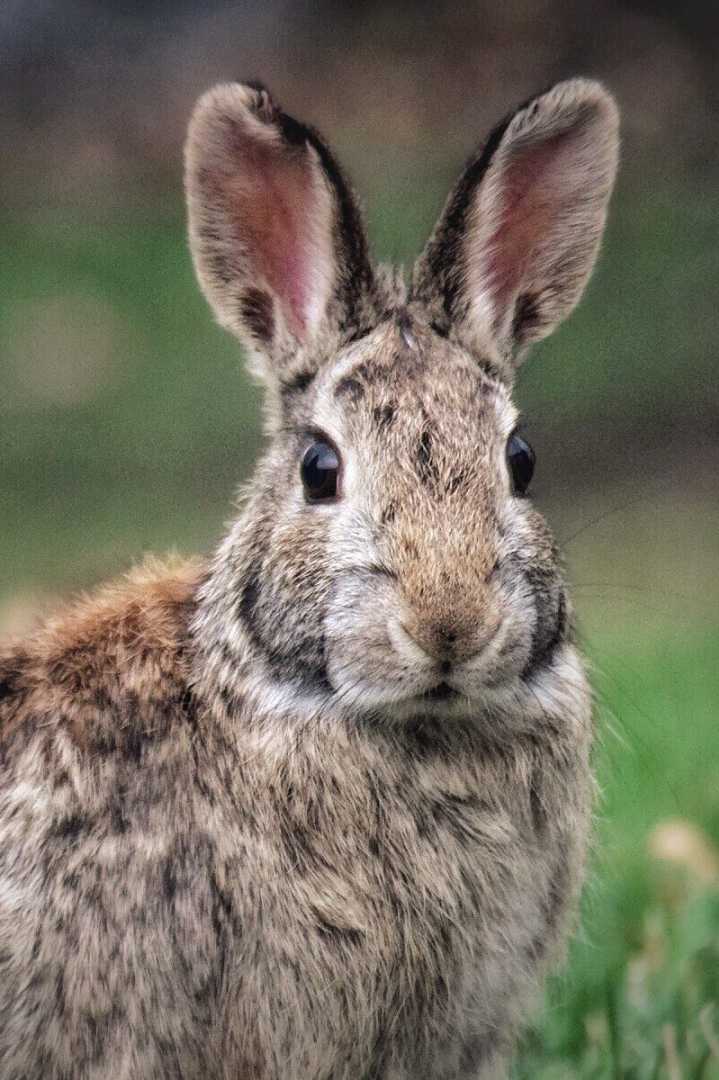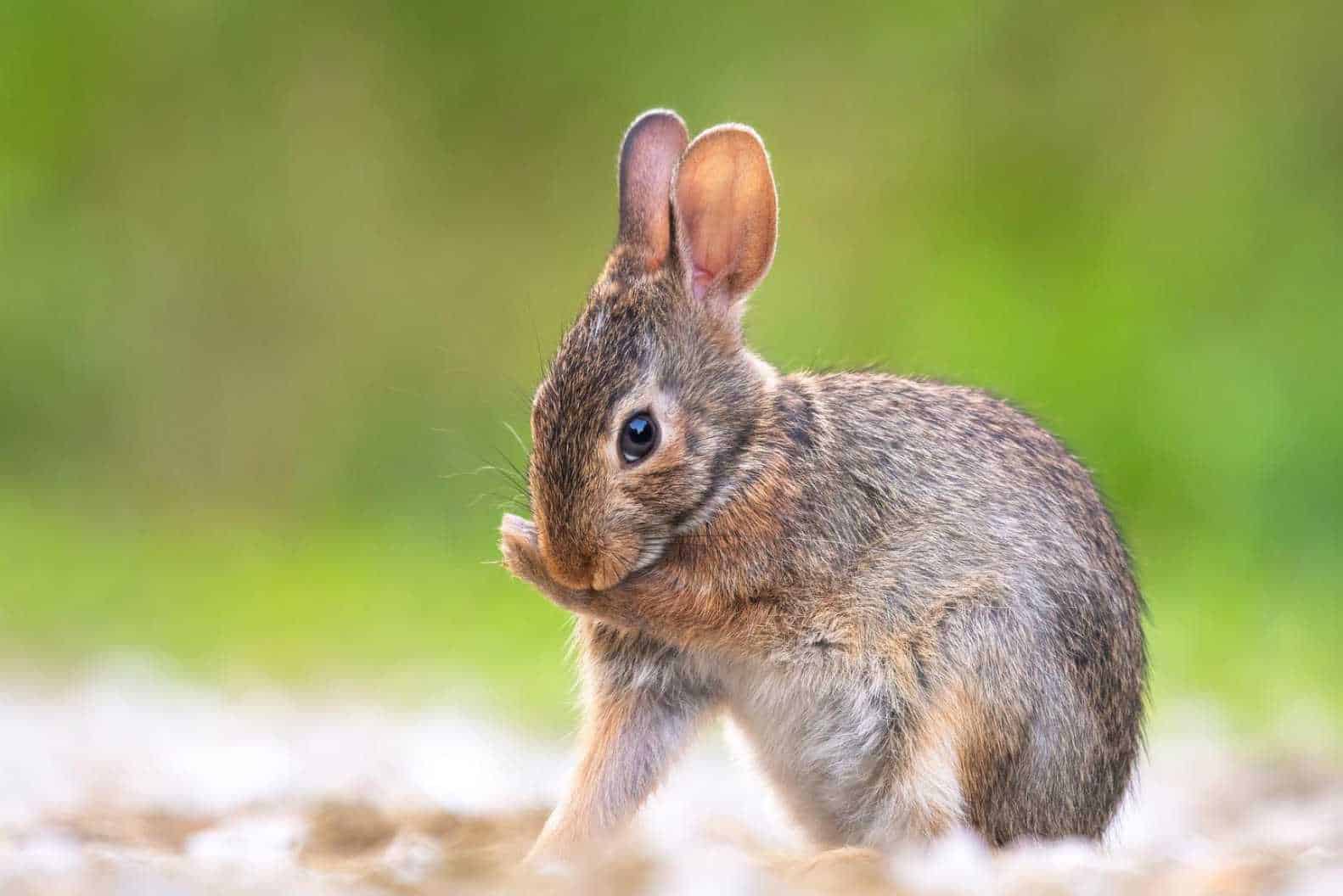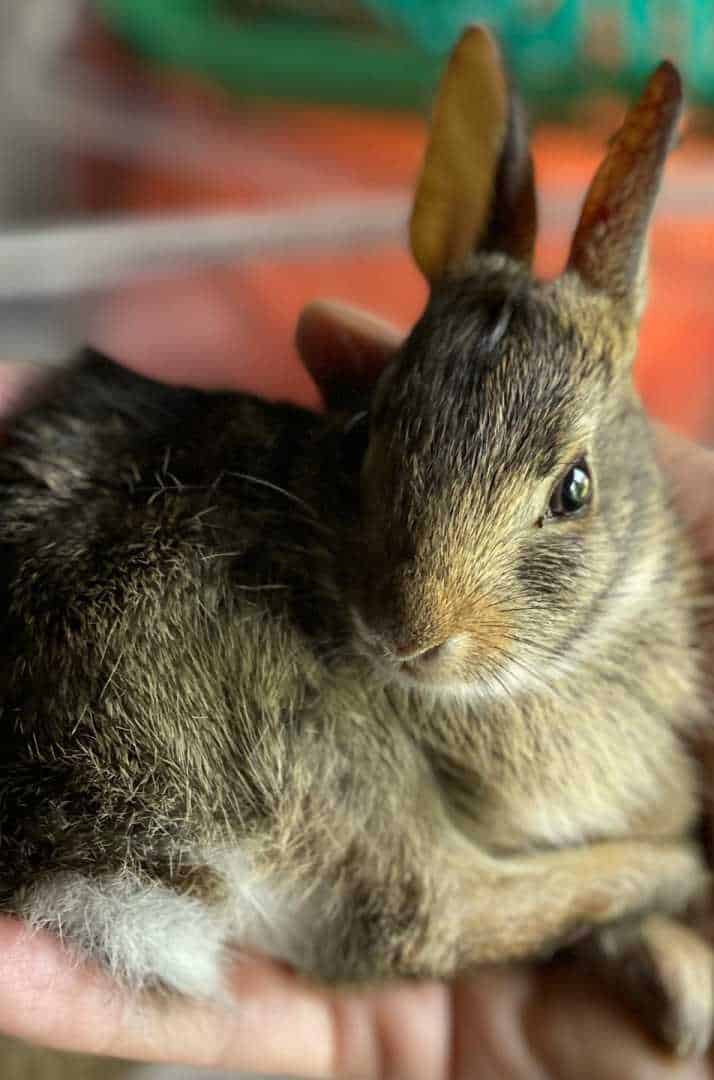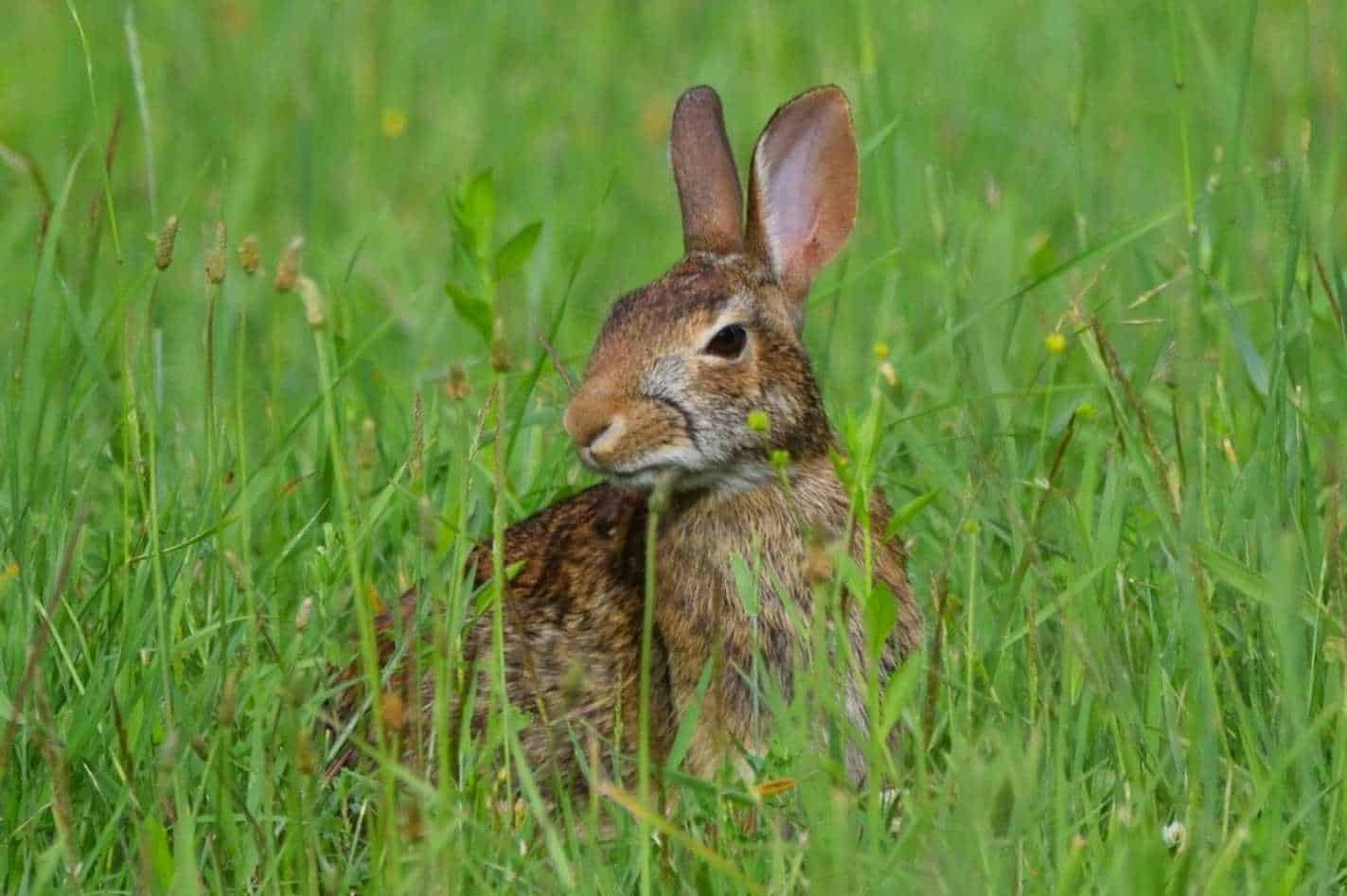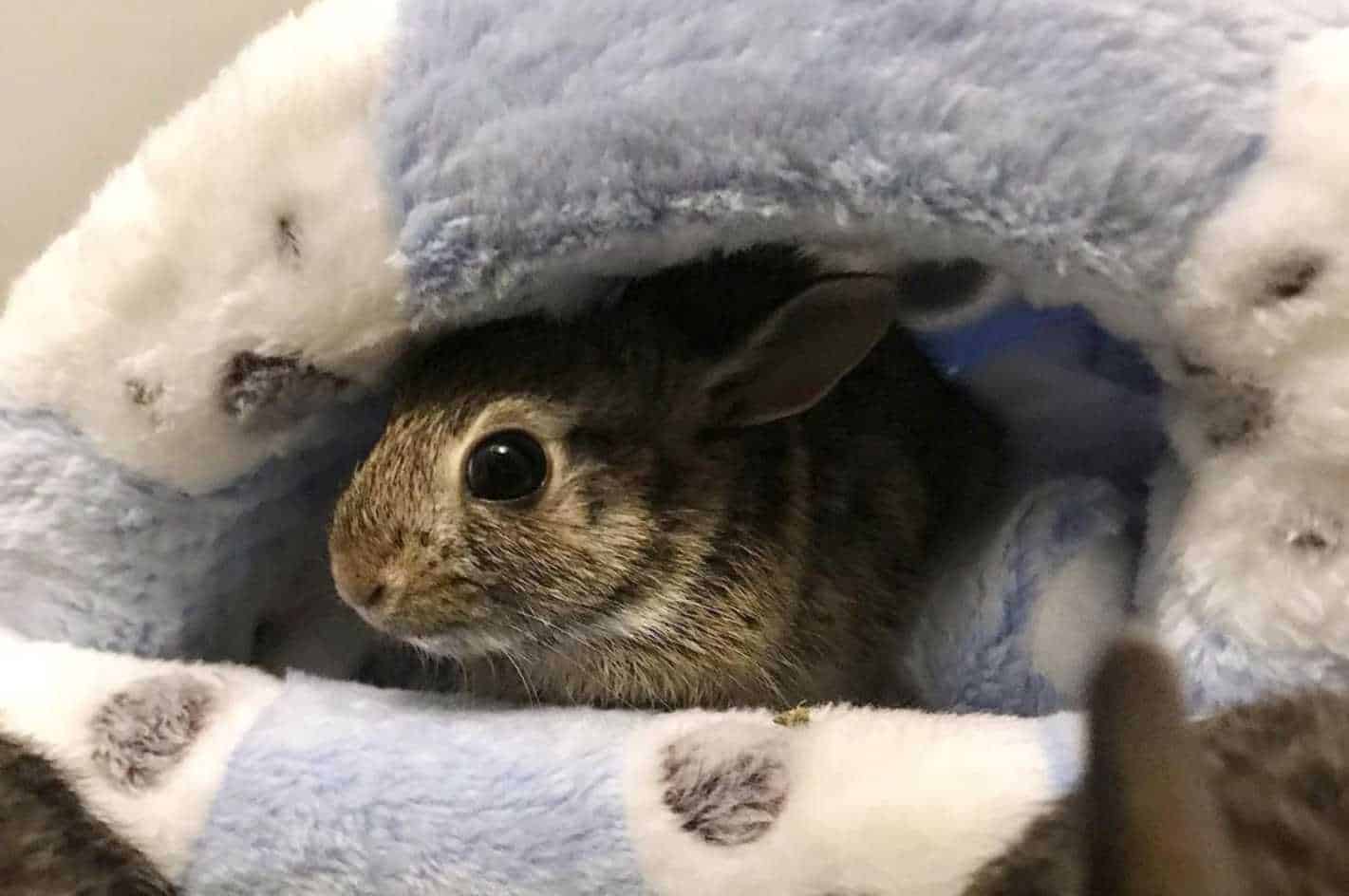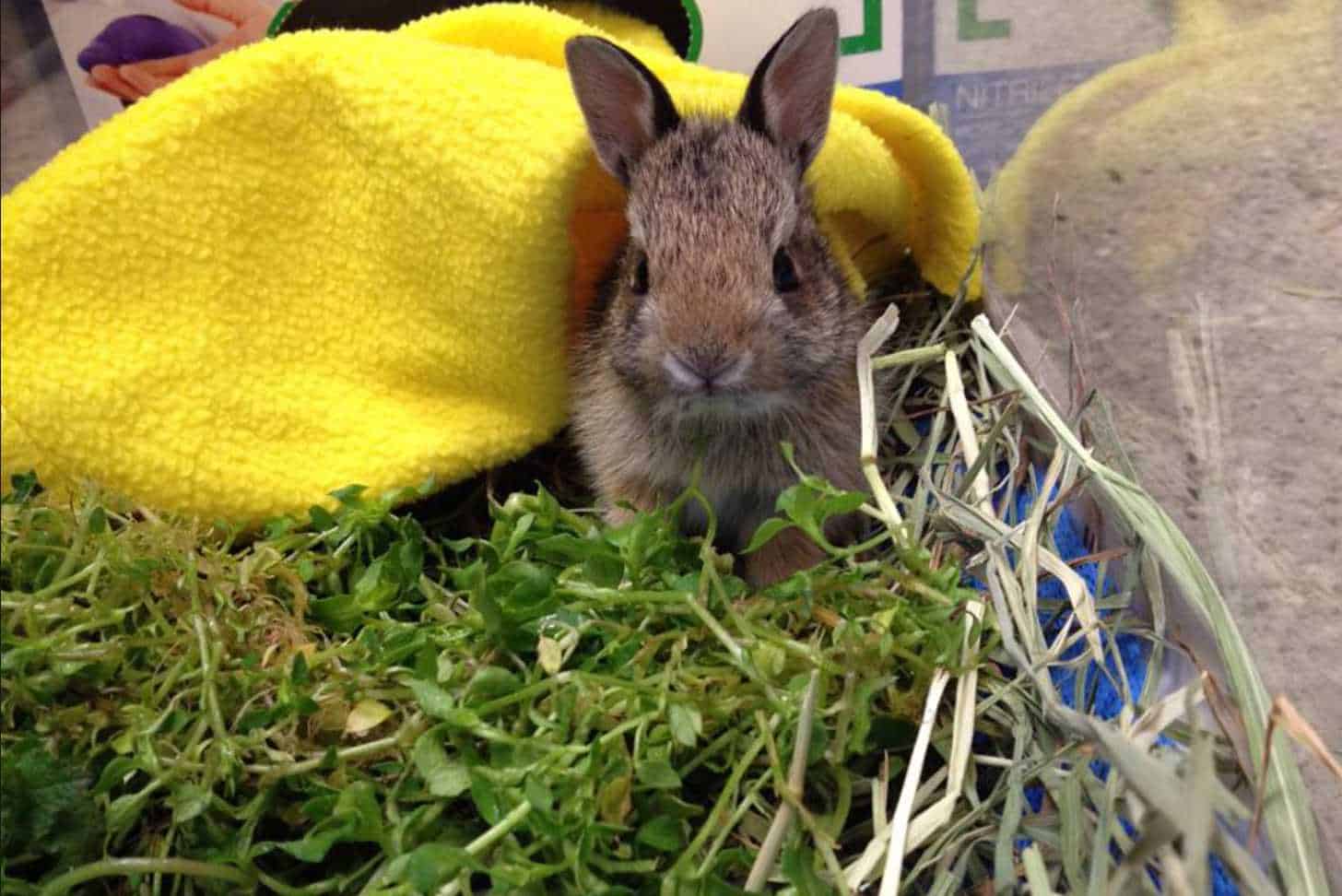If you stumble upon this article, you might already have or are planning to adopt or buy a cute cottontail rabbit. Before doing so, it’s a good move to find out more about the breed and how they are in general. Join us as we introduce cottontail rabbits to you.
Cottontail Rabbit Chart Information
Before everything else, you may want to check this chart on the simplest information about cottontail rabbits.
These details are some general information about this breed that you should know if you consider getting a cottontail rabbit of your own. You may also check this video for more details.
| Breed | Cottontail Rabbit (Sylvilagus spp.) |
| Size | Medium |
| Length | 15 to 19 inches |
| Weight | 2 to 4 lbs |
| Lifespan | 2 to 3 years |
| Color | Light brown body and white fur belly |
| Temperament | Active, silent, crepuscular, fast |
| Rarity | Not extinct, common |
| Similar Breeds | Pygmy rabbit, Coney rabbit |
Background and History of Cottontail Rabbit
The earliest record of Cottontail Rabbits can be traced back to the late 1800s and early 1900s. There are different stories on how each cottontail rabbit breed originated if you check it out.
Still, they all have the same periods. Cottontail rabbits can be found in the Midwestern and Eastern United States. They play a massive role in the animal game in these areas because of their fast reproductive capabilities.
In extensive research studies, the earliest mentions of Cottontail rabbits are from Allen (1938) and Trippensee (1934). However, the different breeds were introduced in their own ways, specifically the New England and Eastern Cottontail.
New England was first introduced in several states, such as Rhode Island, Massachusetts, and Connecticut, in the late 1800s.
In the early 1900s, the Eastern Cottontail was introduced in the Eastern United States and Southern parts of Canada. Their presence has started a competition with the New England Cottontail.
By the year 1930, there were still more New England Cottontail rabbits than Easter Cottontail rabbits. However, in 2006, the New England Cottontail breed was considered endangered, while the Easter Cottontail remained the most common rabbit breed in the United States.
As of writing, more than half of the Cottontail sub-type breeds are either Near Threatened, Vulnerable, or Endangered. Some remain common such as the Eastern Cottontail, Brush Rabbit, and Mexican Cottontail.
The different Cottontail breeds have also spread across the United States and near Puerto Rico, Brazil, Colombia, Ecuador, and Rio de Janeiro.
General Appearance and Standard of Cottontail Rabbit
Unbeknownst to everyone, Cottontail is a general breed with many different subtypes. The thing is that you can encounter a cottontail even if you haven’t figured out which breed because each subtype differs somehow.
Every pet owner needs to know what type it is precisely to figure out how to identify each one of them.
In general, a cottontail rabbit should have a light brown color on its upper body. Their similar characteristics involve having a white fur belly.
They also have long brown ears and a puffy tail, a distinct pair of attributes for the cottontail rabbit. Once you spot all of these characteristics, you’ll surely be able to identify a cottontail rabbit.
As mentioned before, there are many different subtypes for this specific breed, and it’s also essential that you know how to differentiate them from each other. Check out some of them below and see how they differ from one another.
- Eastern Cottontail: Known as the most common rabbit species in the whole of North America, the Eastern Cottontail can be distinguished with gray-brown or red-brown body color and long ears. They also have a short puffy tail that differentiates the cottontail breed.
- New England Cottontail: Also called gray rabbit, the New England Cottontail is a breed populated in New York and New England. It’s an endangered breed that bears some similarities with the Eastern Cottontail. In fact, some consider them identical because it’s hard to differentiate between these two breeds. One of the most distinctive features of a New England Cottontail is the black hair on their forehead or on the back of their ears.
- Brazilian Cottontail: The Brazilian Cottontail, also known as Common Tapeti, is another Endangered Cottontail breed. They typically range from small to medium size and have brown body hair. However, black spots can be seen on their backs with a reddish-brown area along their neck, the same color as their tails and bellies.
Personality and Temperament of Cottontail Rabbit
Cottontail rabbits are known to be a friendly rabbit breed. They are approachable, even in the wild, and they tend to warm up to people faster.
This breed is generally quick on their feet since they play a massive role in the food web. Cottontails are great in hiding in the most bizarre places to get away from any potential harm.
One of the most notable similarities of all rabbits is that they are all prey. That’s why Cottontail rabbits are a bit high-strung and considered a solitary breed.
They are regularly active at the wee hours between dusk and dawn and are silent most of the time except for some occasional purrs and grunts.
Another interesting fact about Cottontail rabbits is that they don’t hibernate at all. This breed is active all year long. They are adaptable for any situation.
Cottontail rabbits that live in the wild tend to move areas during winter to find a place with better vegetation for their food. They can survive independently, so imagine how long a Cottontail rabbit can live if they are well taken care of.
Health of Cottontail Rabbit
In general, a Cottontail rabbit can live on its own for two to three years. They are very much dependent on grass hays for food and their quickness to get away from predators.
However, just imagine how much they can live if they are well taken care of, and all their health and nutritional needs are met by those who care for them.
Cottontail rabbits can start reproducing as early as 2 to 3 months, in which they reach sexual maturity.
Gestation can last from 25 to 31 days, which is a month. Their litter size can be as small as one and as big as eight. When it’s time to give birth, the doe will dig up a nest where she can give birth.
A baby Cottontail rabbit can start leaving the nest once it reaches two weeks old, but it won’t reach maturity until two months old. Only 15% of the young rabbits can survive their first year of life.
Food and Diet for Cottontail Rabbit
It’s essential that you know your rabbit’s diet and what kinds of food you can feed them. Rabbits are herbivores, so they can only eat plants and leafy greens. You should never give them meat since it can significantly affect their health. To know more, continue reading this section.
Foods that are good for Rabbits
- Pellets: Pellets are an excellent food that you can add to your rabbit’s diet. Take note that you can only feed them in small amounts since too much can be harmful. Choose a pellet with high fiber content and mix it up with your rabbit’s meal daily for added nutrition.
- Vegetables: Another food that you should consider adding to your rabbit’s meal is vegetables. This will help them get all the necessary nutrients and minerals to grow healthy and strong. Before every meal, wash the vegetables thoroughly to remove pesticides and make sure that they are always fresh. Daily, you can feed your rabbits with herbs, bell pepper, sprouts, cucumber, zucchini, and Brussel sprouts. On the other hand, you can provide your rabbits once or twice a week with carrots, kale, spinach, and clover.
- Hay: Undoubtedly the most critical part of a rabbit’s diet is hay. One thing you should always take note of is that hay should be fresh every meal. The best kinds of hay to feed your rabbits are either oat grass hay or Timothy grass hay. They provide rabbits with the fiber and nutrients they need to combat any sickness.
- Fruits: If you want to occasionally give them a healthy snack, fruits are a good choice. Take note that you can only offer a tablespoon of fruit for every 5 pounds of your rabbit’s body weight. Do not take this lightly since it can affect your rabbit’s health.
You can feed your rabbits once or twice a week with berries, grapes, peaches, bananas, melons, and watermelons.
Foods that are not good for Rabbits
- Cauliflower
- Potatoes
- Beans
- Chocolate
- Yogurt
- Nuts
- Cabbage
- Peas
- Corn
- Sugar
Common Disease and Health Problems of Cottontail Rabbit
At this point, you already know a lot about Cottontail rabbits and how they are in terms of personality and health. However, it is still essential that you are prepared for anything, such as the common health problems that your rabbit may encounter.
To help you learn more about these common health problems, we designed a list to give you more in-depth knowledge on each one of them. Check them out below.
- Coccidiosis
Coccidial organisms such as E. perforans and Eimeria media are parasites that can live inside a rabbit’s intestine and also cause damage to their livers. Rabbits can naturally have them, young or old.
They can be severe depending on what kind of Coccidial organism has infected them. They can have Coccidiosis if they ever ingest the feces of a rabbit who has these organisms.
The most common way of finding out if a rabbit has Coccidiosis is to check for symptoms such as weakening, weight loss, dehydration, and lack of appetite. It can be treated with oral medication or hospitalization for worst cases.
Like any other furry or hairy animal, rabbits are prone to ectoparasites. To make things easier for you to understand, ectoparasites are tiny organisms that tend to live on a host’s skin and feed off them.
They can infect animals and humans, which is why you should always be vigilant in checking for ectoparasites. Some examples are fleas, ticks, or mites that rabbits can get if they are unrestricted in an ample grass space.
- Warbles
Whenever you go out on a sunny day, make sure that your rabbits are well protected. Parasites called bot flies can infest their skins and lay eggs. When hatched, the larvae will feed on your rabbit’s skin and slowly cause weakening.
Fibroma virus is an infection caused by insect bites such as fleas and mosquitos. They can be transmitted to other rabbits if they are bit by the same insect that carries the virus.
It can be determined with raised nodules on the legs of rabbits. It can cause weakness, movement problems, and even fatal trauma. There is still no definite treatment for this virus.
Care Sheet for Cottontail Rabbit
When caring for Cottontail rabbits, it’s also essential to know the basics of how to care for them. Each rabbit breed differs from one another.
That’s why it’s important to know what to do. This section will give you detailed instructions on how you should take care of your Cottontail rabbit and what things you’ll need to provide them with comfortability.
Grooming
Just like any other rabbits, Cottontail rabbits also need regular grooming. Make it a habit to brush your rabbit’s hair and fur once or twice a week, more often when they are shedding.
This will help maintain a good appearance. Make sure to regularly check their underside, too, and wipe them clean regularly to avoid any infection.
Habitat and Shelter
Cottontail rabbits are happier to live on open area lands where they can have space to hop around. If you have a backyard, make sure to fence the area to ensure that no rabbit predator can enter their habitat.
That is the first thing that you need to consider. Cottontail rabbits are not too good with being locked in a small space, so if you need to keep them in, make sure that you don’t leave them for a long time.
Also, consider their nesting areas. It’s better to have some shrubs and bushes where they’ll be comfortable enough to build nests. Give them covers since rabbits like hiding in natural hiding areas such as logs.
Temperature
Cottontail rabbits are not too sensitive when it comes to temperature. They can strive at any temperature, but you could also help make them comfortable by going for a shelter that doesn’t go higher than 80 degrees Fahrenheit.
Heatstroke is uncommon, but it can still happen, so make sure to check on your rabbit from time to time, especially during summer.
Summary
By the end of the article, you should already know more information about cottontail rabbits than you did before. Just ensure that they are well taken care of with their diet and health so they can live with you for a very long time with minimal problems to worry about.
